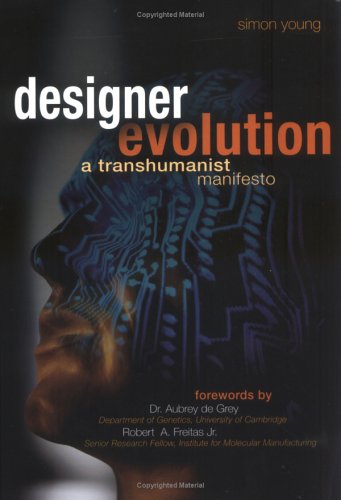
29th January 2009 - I have been hesistant as to whether I should blog about this meeting on "Transhumanism", as I couldn't really follow the discussion, particularly about the many books that were introduced. Besides, the location (for this particular session only) wasn also too noisy and distracting.
.
First the definition from Wikipedia:
Transhumanism is an international intellectual and cultural movement supporting the use of science and technology to improve human mental andphysical characteristics and capacities. The movement regards aspects of the human condition, such as disability, suffering, disease, aging, and involuntary death as unnecessary and undesirable. Transhumanists look to biotechnologies and other emerging technologies for these purposes.
.
The Books:
.
The Scientific Conquest of Death, published by the Immortality Institute:

From Amazon.com : Nineteen scientists, doctors and philosophers share their perspective on what is arguably the most significant scientific development that humanity has ever faced - the eradication of aging and mortality. This anthology is both a gentle introduction to the multitude of cutting-edge scientific developments, and a thoughtful, multidisciplinary discussion of the ethics, politics and philosophy behind the scientific conquest of aging... more
.
.
Our Posthuman Future: Consequences of the Biotechnology Future:

Author Francis Fukuyama argues that as a result of biomedical advances, we are facing the possibility of a future in which our humanity itself will be altered beyond recognition. Fukuyama sketches a brief history of man's changing understanding of human nature: from Plato and Aristotle to modernity's utopians and dictators who sought to remake mankind for ideological ends. Fukuyama argues that the ability to manipulate the DNA of all of one person's descendants will have profound, and potentially terrible, consequences for our political order, even if undertaken with the best of intentions.
.
.
The Artilect War: Cosmists vs Terrans: A Bitter Controversy Concerning Whether Humanity Should Build Godlike Massively Intelligent Machines

This book’s main idea is that this century’s global politics will be dominated by the "species dominance" issue. 21st century technologies will enable the building of artilects (artificial intellects, artificial intelligences, massively intelligent machines) with 1040 components, using reversible, heatless, 3D, molecular scale, self assembling, one bit per atom, nano-teched, quantum computers, which may dwarf human intelligence levels by a factor of trillions of trillions and more.
.
The question that will dominate global politics this century will be whether humanity should or should not build these artilects. Those in favor of building them are called "Cosmists" in this book, due to their "cosmic" perspective. Those opposed to building them are called "Terrans," as in "terra," the Earth, which is their perspective. The Cosmists will want to build artilects, amongst other reasons, because to them it will be a religion, a scientist's religion that is compatible with modern scientific knowledge... more
.
.
Designer Evolution: A Transhumanist Manifesto

Designing Evolution presents an overview and vigorous defense of the transhumanist philosophy, which the author defines as "the belief in overcoming human limitations through reason,science and technology."
.
Simon Young, a pianist and son of the cybernetician J.F. Young, calls for a renewed belief in human progress through scientific rationality, and predicts the emergence of a twenty-first-century transcendence through science.
.
.
Evolution's Arrow

Evolution's Arrow argues that evolution is directional and progressive, and that this has major consequences for humanity. Without resort to teleology, the book demonstrates that evolution moves in the direction of producing cooperative organisations of greater scale and evolvability - evolution has organised molecular processes into cells, cells into organisms, and organisms into societies. The book founds this position on a new theory of the evolution of cooperation. It shows that self-interest at the level of the genes does not prevent cooperation from increasing as evolution unfolds. Evolution progresses by discovering ways to build cooperative organisations out of self-interested individuals. more
.
.

Campbell discusses the importance of accepting death as rebirth as in myth of the buffalo and the story of Christ, the rite of passage in primitive societies, the role of mystical Shamans, and the decline of ritual in today's society. more
.
Patterns in Prehistory

.
Patterns in Prehistory , Fifth Edition, is a comprehensive and engaging survey of humanity's past three million years. It brings together theories and archaeological examples to pose questions about who we are and the means by which humanity evolved into what it is today.
.
.
All the above-mentioned books were rapidly discussed on how the authors opine about the evolution to transhumanism and whether we will one day reach singularity.
.
Going around the table, we asked each of us to voice what they would like to get out of transhumanism, or even the disagreement of the whole idea. Here are the following points:
- To have higher brain processing power and memory
- To grow old without being weak and wrinkly old.
- To be able to download skills to ourselves, without having to learn consciously.
- To be able to have better health.
- To enhance empathy to other beings
- To improve cognitve ability
- To improve my thoughts
[End of meeting]
.
.jpg)














No comments:
Post a Comment